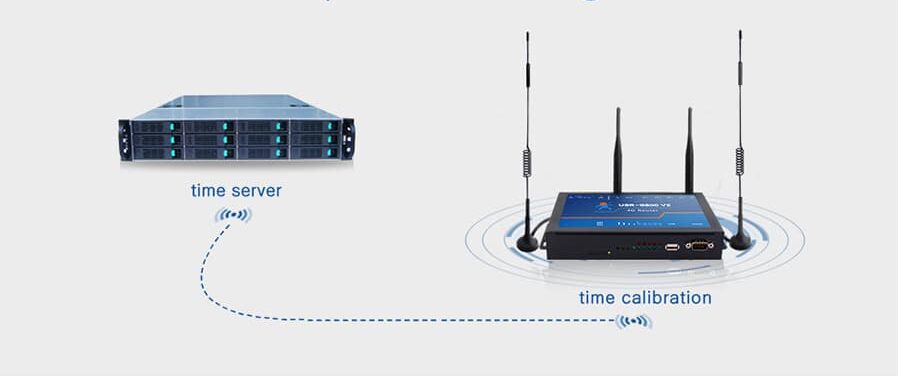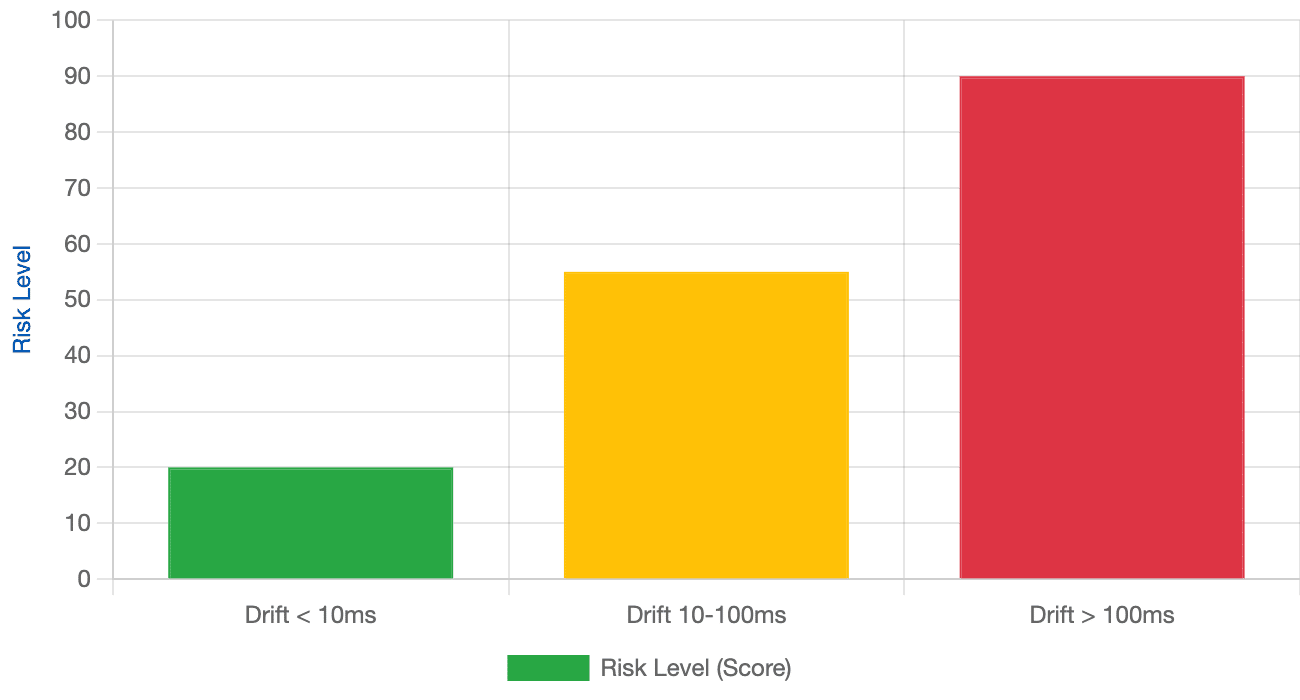Time Server (NTP/PTP): The Synchronous Heart of the Digital Age and the Critical Role of Calibration

In the age of the Internet of Things (IoT) and high-speed electronic transactions, Time is no longer just an abstract concept. It is a digital asset that requires strict management and protection. The Time Server, utilizing protocols like NTP (Network Time Protocol) and PTP (Precision Time Protocol), acts as the “Synchronous Heart” of every modern system. This device ensures that every process—from stock market transactions to grid fault diagnosis—occurs according to a precise and absolutely unified timeline.
Without accurate time synchronization, the entire digital infrastructure descends into chaos. However, the Time Server itself can only function effectively if the time source it provides is calibrated and traceable back to Coordinated Universal Time (UTC).
CORE ROLE OF TIME SERVER: TIME SYNCHRONIZATION
Establish Causality Chain
Ensures event sequences are recorded in the exact order they occurred, vital for forensics and fault analysis.
Maintain Data Integrity
Prevents transaction rejection due to time conflicts between distributed servers.
Foundation for Legal Compliance
Provides irrefutable time evidence as required by financial and security regulations (e.g., MiFID II).
1. Core Applications: Synchronized Time is a Survival Factor
The Time Server provides an accurate, synchronized, and traceable time source for every device on the network, forming the foundation for many essential industries.
Ultra-High Accuracy Applications (PTP Essential)
HIGH-FREQUENCY TRADING
Synchronizes transactions within microseconds for regulatory compliance and loss prevention.
SMART GRID & ENERGY
Synchronizes PMUs to instantly detect and isolate faults within the electrical grid.
TELECOM (5G/6G NETWORKS)
Ensures seamless cell handover and precise location services in mobile networks.
1.1. Finance and High-Frequency Trading
In the global financial market, every millisecond counts.
- Regulatory Requirements: International financial regulators (like MiFID II in Europe) demand that exchanges and banks log every transaction with microsecond accuracy. PTP time servers are mandatory to meet this standard.
- Event Analysis: When analyzing market behavior or investigating potential manipulation, transaction logs must be absolutely synchronized. Even a small time deviation renders the reconstruction of the event chain and the determination of trading advantage invalid.
1.2. Smart Grids and Energy Management
Accurate timing is central to managing large power grids.
- Fault Diagnosis: Phasor Measurement Units (PMUs) in smart grids require precise timing to record voltage and frequency fluctuations. Time synchronization helps engineers locate and determine the precise sequence of a fault within milliseconds.
- Renewable Integration: Solar and wind energy facilities need extremely precise timing to synchronize power injection with the main grid, maintaining system stability.
1.3. Telecommunications, 5G/6G, and Broadcasting
Synchronization of frequency and phase is necessary to maintain signal quality and bandwidth.
- Cellular Signal Management: Mobile base stations must transmit and receive signals in precise time slots. PTP ensures neighboring stations phase-synchronize, preventing interference and maximizing 5G network performance.
- Media Distribution: In TV networks and video transmission systems, time synchronization ensures video and audio signals reach the user simultaneously, avoiding lag or audio/video desynchronization.
2. Applications in IT Systems and Cybersecurity
In the Information Technology (IT) environment, synchronized time forms the basis of security, auditing, and system management.
Cybersecurity & IT System Applications (NTP Standard)
CYBERSECURITY & FORENSICS
Analyzes the precise sequence of attack events via system logs.
DATA RECORDS & ERP SYSTEMS
Accurately logs the chronological order of all business and database transactions.
2.1. Cybersecurity and Digital Forensics
- Tracking Attacks: This is the most crucial application. When a cyber attack or data breach occurs, forensics experts need event logs from various servers, routers, and firewalls. If the time across devices is unsynchronized, reconstructing the attack sequence becomes impossible.
- Security Authentication: Many security and encryption protocols (e.g., Kerberos, TLS) rely on accurate timestamps to authenticate users and secure data. Time discrepancies can cause authentication to fail.
2.2. Data Records and Enterprise Systems
- Data Integrity: Enterprise Resource Planning (ERP) systems and databases require precise timestamps for every operation. This ensures the integrity and consistency of the data.
- Synchronized Backup: Data backups across different servers must be performed simultaneously. Otherwise, data recovery may lead to data loss or version mismatches.
3. Time Server Calibration: Ensuring a Standard Time Source
The Time Server, whether hardware or software, requires an external reference source to operate accurately. This is where calibration becomes essential.
The Crucial Role of Calibration
Calibration verifies that the reference time source is accurate and traceable.
SOURCE TRACEABILITY (GPS/GNSS)
Ensures the server synchronizes with international Atomic Time Sources.
STRATUM LEVEL INTEGRITY
Confirms the Stratum level is accurate and stable.
OSCILLATOR STABILITY (HOLDOVER)
Evaluates and fine-tunes the internal clock to maintain time when GPS signal is lost.
3.1. Traceability is Mandatory
The most common time source used is GPS (Global Positioning System) or other global navigation satellite systems (GNSS). However, satellite signals can be affected by interference, weather, or atmospheric factors.
- Validating Accuracy: Time Server Calibration is the process of comparing the server’s output time against a national or international time standard (UTC). This occurs through ISO/IEC 17025 accredited laboratories. This process proves that the time used by your system is accurate and legally valid.
- Protecting Against Offset: Calibration helps detect and correct the accumulated time offset between the server’s internal clock (usually a quartz oscillator) and the UTC source. Without calibration, this offset can drift up to hundreds of milliseconds per month.
3.2. The Role of Protocols (NTP vs. PTP) in Accuracy
Core Synchronization Protocols: NTP vs PTP
NTP (Network Time Protocol)
⏱️ ACCURACY: Milliseconds (ms)
- Widespread use for general servers and IT networks.
- Uses UDP, lower computational complexity.
- Sufficient for traditional IT infrastructure.
PTP (Precision Time Protocol – IEEE 1588)
⚡ ACCURACY: Nanoseconds (ns)
- Crucial for High-Frequency Trading, Smart Grids, and scientific labs.
- Requires hardware support for highest precision.
- Necessary for industrial and ultra-precise applications.
Calibration plays different roles depending on the protocol used:
- NTP (Network Time Protocol): Achieves accuracy down to the millisecond range. It suits general IT networks. Calibration ensures the stability of the Reference Clock used by NTP.
- PTP (Precision Time Protocol): Achieves accuracy down to the microsecond or even nanosecond range. It is mandatory for industrial and financial applications. PTP requires more stringent calibration because any error in the Master Clock’s oscillator will compromise the entire network’s synchronization.
3.3. Optimizing Stability
Regular calibration does not just check accuracy at one point in time; it also assesses the server’s stability. This helps organizations determine when hardware upgrades or maintenance are needed. It ensures uninterrupted operation.
Impact of Time Drift on Systems
Risk level increases significantly with time delay (Illustrative Data).
Increased Security and Financial Risk by Time Delay

Risk of Log File Loss
Loss of data correlation if offset exceeds 100ms.
HFT Trading Losses
A few nanoseconds of deviation can cause huge losses in trading.
Conclusion
The Time Server is not merely an optional utility; it is a Critical Infrastructure component. It ensures that financial, energy, and telecommunications systems operate safely and synchronously.
To maintain the integrity of synchronized time, Time Server calibration is a mandatory legal and technical requirement. Partnering with accredited calibration laboratories helps organizations achieve compliance. It also strengthens their network defenses and ensures business transactions occur with absolute precision, building trust in the digital age.
Have you verified the accuracy of the UTC time source your systems rely on recently?



